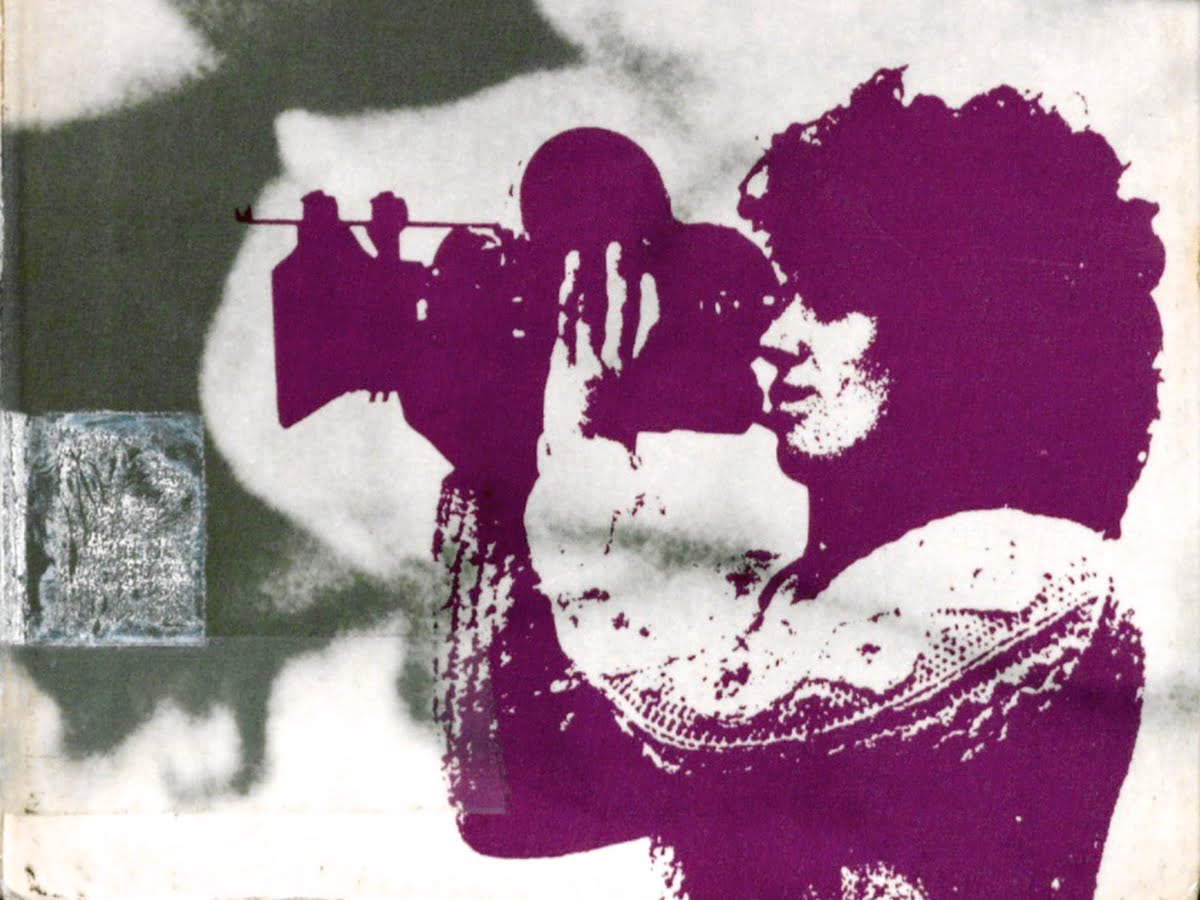When contextualising feminism and cinema, the idea is not to merely look at films as a cultural industry but also to include its products, the films itself, the conditions in which certain films are produced, the nature of the production and how it is received. This is what a feminist film theory attempts to do.
Feminism and its interventions both in the West and India have majorly contributed in terms of providing a theoretical understanding of the significance of the cultural factors, particularly in the ways it ideologically constructs the category ‘woman’. This feminist film theory emphasised on how the manifestations of patriarchy and feminism do not work in a vacuum or a void. Therefore it wouldn’t be wrong to argue that cultural politics do not work in isolation but are equally influenced by ideologies of class, caste or gender. Thus, if culture can fall within the ambit of ideology in terms of implications in constructing gender categories, it becomes a significant site to analyse and intervene in gender relations.
The feminist film theory emphasised on how the manifestations of patriarchy and feminism do not work in a vacuum or a void. Therefore it wouldn’t be wrong to argue that cultural politics do not work in isolation but are equally influenced by ideologies of class, caste or gender.
Second wave feminism has been extremely influential in expanding the ways in which gender categories could be re- understood and theorised. Cultural politics was a new site found by feminists where the symbol and the category ‘woman’ was being formulated. Images of the ideal ‘woman’ were being bombarded in films, magazines, print advertisements etc. Feminists found this problematic at two levels: one, it objectified women and two, it created unattainable standards of being the ‘perfect’ woman. The latter problem was indeed facilitated by capitalists and the growing consumer market. Feminist film theory was also founded on the same criticism and history.
Feminist film theory was extremely instrumental and influential in providing with an alternate i.e. a feminist way to look at films, a domain that Laura Mulvey claims to be ‘for men and by men’.
In her essay Visual Pleasure and Narrative Cinema published in ‘Screen’, Mulvey argued that films should not be seen as merely an innocent form of entertainment. She proposed that a film should not be seen as a mere text, but we should consider how it is made, when it was made, who made it and how it was received, basically an organic multi-dimensional approach to reading films. I would like to give a brief review of Mulvey’s essay since she deals with critical issues of the male gaze, fetishism, objectification and spectatorship that becomes essential to mention under any project of feminist film studies.
This essay marks the foundation of feminist film theory and it is not possible to delve into film theory without introspecting about this essay. Laura Mulvey’s essay was probably one of the most ground breaking essays during the 1970’s. The importance of reading Mulvey’s essay lies in how even though it was written four decades ago, its theory on film production are still very much applicable. It provides us with essential tools needed to understand film theory from a feminist perspective. That is precisely the charm of feminist film theory, that, it has not been stagnant since in its formation and had adopted to new technologies as well as debates on gender.
In her “Visual Pleasure and Narrative Cinema”, Laura Mulvey uses psychoanalytical theory as a “political weapon” to understand how patriarchy subconsciously affects the way we produce and receive cinematic images. Mulvey observes cinema as a text and argues that it is in lieu with the cultural subconscious which works in accordance with patriarchal ideologies. She uses semiotics with psychoanalytical analysis to understand structures of desire and the formation of subjectivity and to interpret how and why films produce the meaning that they produce.
Mulvey’s main argument is that Hollywood is a dream factory that produces images for the visual pleasure of men. She explicitly talks about the male gaze and how it is structured in mainstream cinema. The woman who is always the sexual desire or object for the male gaze and never the bearer of it. The viewer identifies with the masculinised identity and finds identification with the hero that helps the viewer to transcend to a position of power, which is done through the gaze and the use of a camera.
As briefly mentioned above, Mulvey identified two ways in which Hollywood produces pleasures and meaning. The first one involves the identification with the image and second, the objectification of the image. Both of these faculties reflect the male fantasies. She then further delves into psychoanalysis and borrows two terms, which are Scopophilia and Freudian Ego.
Scopophilia is the pleasure derived from not only mere looking at someone but in a manner that one becomes the objects of someone else’s gaze. The second form of visual pleasure is when a viewer identifies with the character which feeds into one’s Freudian ego. Both of these forms reflect ideologies of patriarchy and therefore are gendered. Scopophilia works on the logic of active/passive where the man is an active observer and the woman has no control over the gaze. She calls it the “to-be-looked-at-ness”. This process of looked-at-ness has two facets, one is through the male figure and the other is the placement of the camera both of which objectify woman. Mulvey further argues wherein she says that the identification stage is similar to Lacan’s mirror stage where the viewer/subject views himself as a whole and authoritative figure in themselves.
Mulvey finally goes on to talk about the female figure as being a paradoxical one. On one hand, a woman is objectified while playing with her deep fears of castration. The male subconscious has two ways to escape this anxiety, one, by placing oneself in a superior order of things, for example by trying to save or punish the woman. Second, by fetishising or through the voyeurism of the woman, example being, the unobtainable glamourous star. Therefore in films, the male subconscious consistently deals with either by being attracted to or fearing the woman both of which require some form of masculine desire. In her conclusion Mulvey argues that one must have an inclusive approach towards film criticism which should ideally include the camera’s look, the audience and actors who look at each other. She argues that unfortunately films never focus on the first two and merely focus on the third.
Mulvey’s “Visual Pleasure and Narrative Cinema” was celebrated as well as criticised on the one hand for reinforcing heterosexuality and on the other hand for assuming a passive, un-negotiating viewer. She also didn’t mention the female gaze, however, she did talk about it in her afterthoughts on this essay.
Mulvey’s essay has been criticised by feminists and herself in the “Afterthoughts of Visual Pleasure and Narrative Cinema” for being phallocentric and not taking other gazes such as female gaze or homosexual gaze in consideration respectively. Parveen Adam in her essay ‘Per Os(cillation) has criticised Mulvey by emphasizing that “it is not possible to determine sexual position through identification”. Feminist film theory has extended psychoanalysis to the term sadomaschocism on analysing Mulvey’s essay. Theorists problematise it by saying that the term oscillates between passive and active, male and female subject positions, rather than strictly adhering to the notion of the unipolar experience of the viewer. One should be critical of the term sadomaschism when applying to feminist film theory in the sense that we must keenly observe where the power actually lies rather than merely fixing to the notion of active/male passive/female dichotomy.
Although universally appreciated, Mulvey’s essay is quite Euro-American Centric in her understanding of films. Indian film studies cannot fully use Mulvey’s arguments in understanding the specificity of Indian popular cinema. The problem with reading and applying Mulvey to the Indian context in today’s time is that feminist film theory was formulated in a specific time, space and historicity which were clearly very different from Indian context. Madhav Prasad in his essay ‘Ideology of Hindi Films’ states that psychoanalysis, which Mulvey and other feminist film theorists use, developed as an instructive and impactful tool in understanding cinematic text but it could not have been applied universally as it had been manifested as a historical necessity.
Madhav Prasad in his essay ‘Ideology of Hindi Films’ states that psychoanalysis, which Mulvey and other feminist film theorists use, developed as an instructive and impactful tool in understanding cinematic text but it could not have been applied universally as it had been manifested as a historical necessity.
“Men act, women appear. Men look at women, women watch themselves being looked at.” This quote represents the dynamics of cinema, whether in the west or in India. There rarely are stories in Indian cinema which revolve around single unattached women. Woman are always seen as a spectacle in relation to men. Indian cinema has been an impasse establishing a difference between actors and female hired for the role of youth and beauty. Conventionally, women are a part of the ideology of ‘looked-at-ness’ who are merely commodified for their beauty and physical features, with hardly a dividing line between beauty contests and acting in films. The Indian film industry is filled with examples of women who have jumped from the Miss India stage to the film screens, like, Zeenat Amaan, Juhi Chawla, Aishwariya Rai, Priyanka Chopra et al.

Indian films have a distinctive feature which is not prevalent in other film industries around the world, which is, it’s insertion of songs and dance sequences with great ease. Popular Indian cinema constitutes ‘item’ numbers which inevitably work on the logic of commodification and objectification of women’s bodies for the purpose of publicity and selling of film.
Mulvey claims that women signifies lack which causes anxiety in the male, so the male seeks to overcome this anxiety by fetishism or objectification. Therefore women are seen as a threat as well as an object of desire and hence binaries where the men worship and fetishise the woman, the goddess/mother, binary is quite central and specific to the Indian context. Mother India becomes an epitome of such a binary.
According to Patricia Uberoi, popular culture is an important field of study for two reasons, firstly, because popular culture facilitates one to think across all genres and to look at the different overlapping intersectionalities that are there in various genres and cultural formations. Secondly, it allows one to think to formulate a dialogue between modern mass media and folk culture, the emphasis on vernacular culture as opposed to high culture.
Art historians have argued that Indian popular cinema uses a technique of viewership based on the indigenous concept of ‘darshana‘ (the visual exchange between a deity and devotee) and bazar (the romantic eye contact of lovers) operating in ‘interlocutor’, ‘hybridising’ dialogue with other ‘systems of visual coding that include what may be labeled as ‘western’ modes of viewing.
Partha Chatterjee in his essay “Critique of popular culture” exemplifies how as scholars of cultural or feminist studies we must look at the ideology or the industry of popular culture. According to him, we must make aesthetic or political judgments about the world of culture something that we claim to study instead of taking culture at face value.
Hence, the idea of feminist film theory is to study film from multiple feminist theoretical perspectives and not in an unilateral singular manner. As the viewer, image-makers, consumers of content, active members of any film industry, we must be critical of the hows and when of an image, and learn to look at images in a more critical fashion.
Priyanca Singh has studied Literature, Communications and Gender Studies. Currently, she freelances as a Writer, Communications Consultant/Strategist and Producer.
Featured image source: Medium




